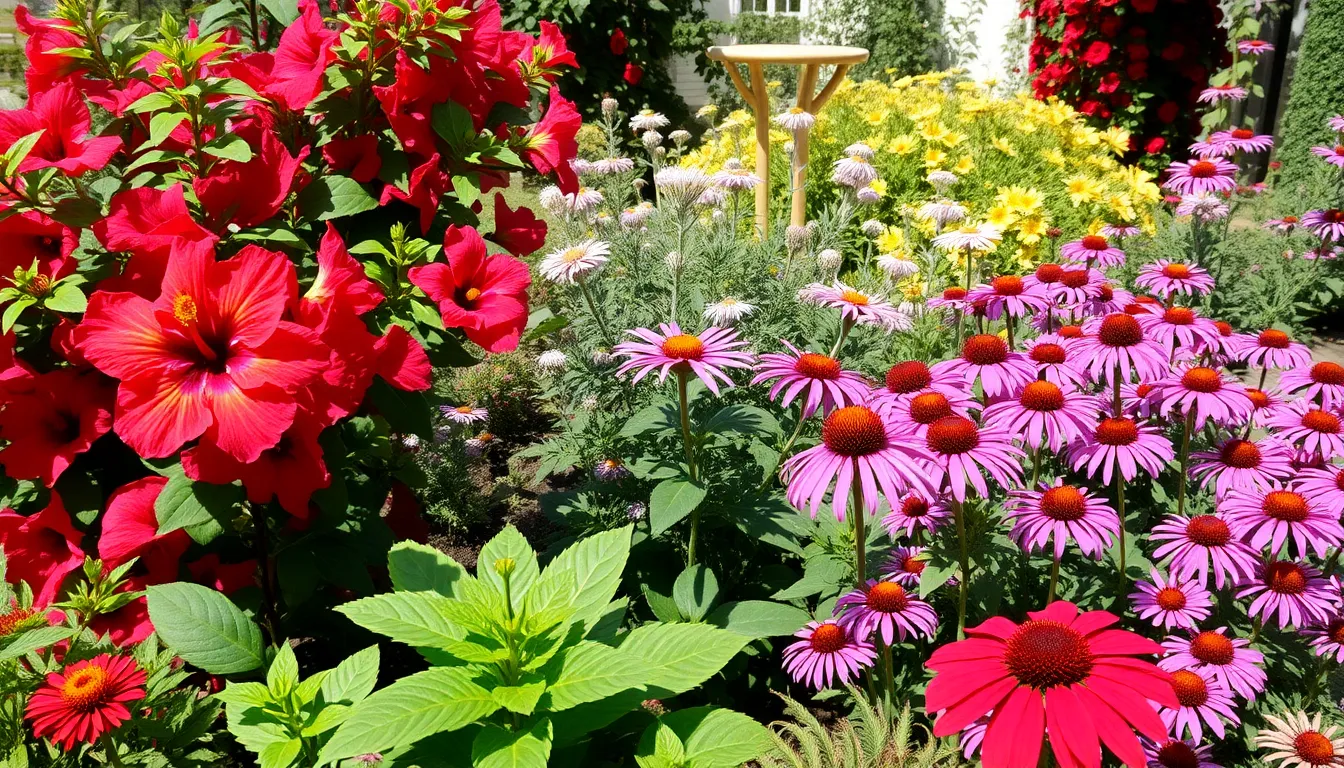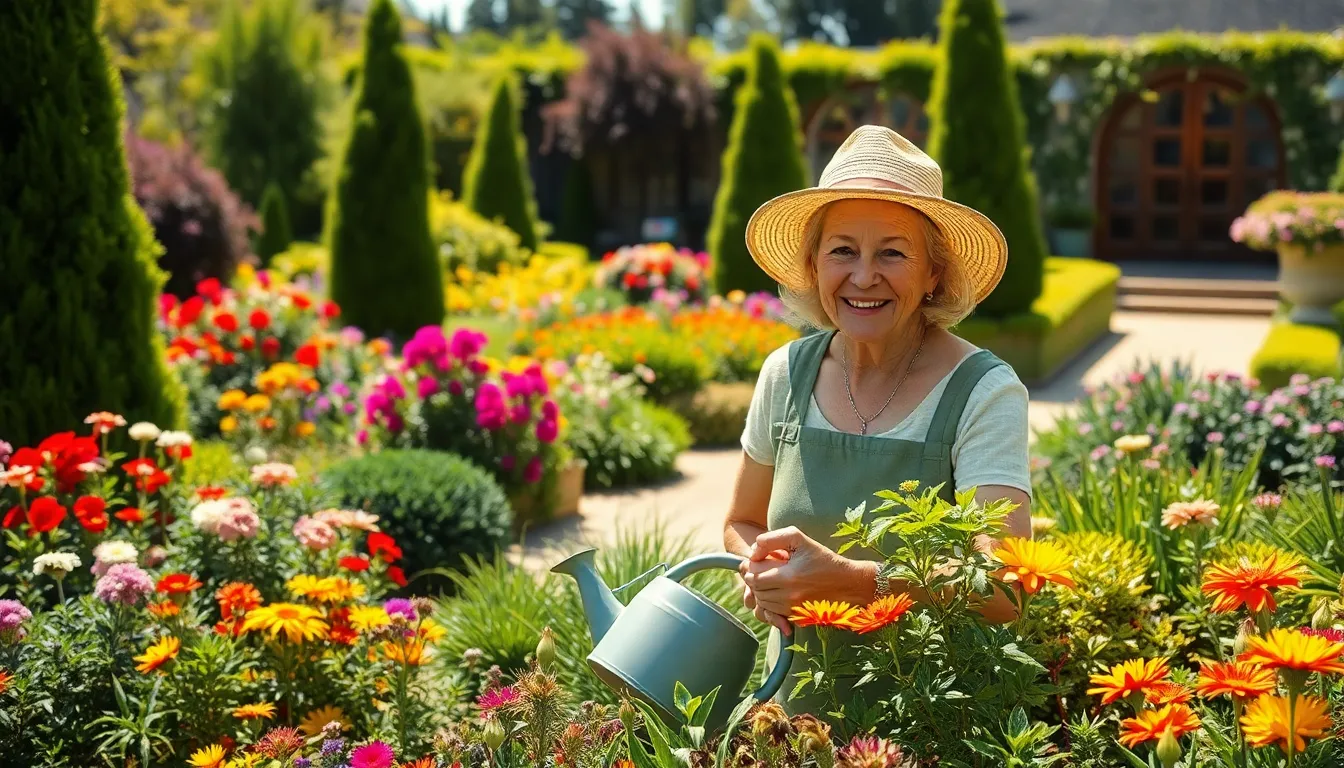Imagine stepping into a garden that feels like a mini paradise, where vibrant colors and delightful scents dance together in perfect harmony. Landscape plants are the unsung heroes of outdoor spaces, transforming mundane yards into breathtaking retreats. They don’t just sit there looking pretty; they work hard to enhance curb appeal, provide shade, and even boost property values.
Table of Contents
ToggleOverview Of Landscape Plants
Landscape plants play a crucial role in transforming outdoor spaces into vibrant environments. Their impact extends beyond beauty, enhancing functionality and property values.
Definition And Importance
Landscape plants encompass a variety of flora designed for outdoor spaces. These plants improve aesthetic appeal and provide environmental benefits. They offer shade, reduce energy costs, and contribute to biodiversity. Additionally, well-chosen plants can create inviting areas for relaxation and recreation. Investing in landscape plants significantly boosts curb appeal, making properties more attractive to potential buyers.
Types Of Landscape Plants
Several types of landscape plants serve different purposes and aesthetics. Trees provide shade and height, contributing to structure in a garden. Shrubs assist in creating privacy and can form natural borders. Perennials offer ongoing blooms, adding color throughout the growing season. Annuals deliver vibrant displays that can change each year. Ground covers help prevent erosion while filling gaps in landscaping. Each type of plant has unique characteristics that enhance outdoor spaces in specific ways.
Choosing The Right Landscape Plants

Selecting appropriate landscape plants involves understanding various factors that affect growth and aesthetics. Prioritizing climate and soil suitability ensures healthy plants thrive in the intended environment.
Climate Considerations
Climate plays a crucial role in plant selection. Understanding local temperatures and rainfall patterns helps identify suitable species. Tropical climates favor plants like hibiscus and bougainvillea. In contrast, cooler regions benefit from evergreens and hardy perennials such as coneflowers. Additionally, choosing native plants adapts to local conditions more efficiently. Seasonal changes also influence growth cycles, making it important to consider the potential hardiness zones when planning a landscape design.
Soil Types And Conditions
Soil characteristics significantly impact plant health and growth rates. Different plants thrive in various soil types, including sandy, clay, or loamy soils. For example, succulents prefer well-drained sandy soils, while ferns thrive in moist, rich soils. Testing soil pH helps determine nutrient availability, guiding selections. Amendments such as compost can improve soil quality, supporting a vibrant garden ecosystem. Understanding drainage capabilities ensures plants receive adequate water without root rot risks, ultimately promoting longevity and flourishing outdoor spaces.
Popular Landscape Plants
Landscape plants include a variety of species that enhance outdoor spaces. Selecting the right plants contributes significantly to the overall aesthetic and functionality.
Trees
Trees add height and structure to landscapes. Varieties like maple and oak offer shade, while magnolia provides stunning blooms. Evergreens, such as pines and spruces, maintain greenery year-round. These trees also support biodiversity by offering habitats for birds and insects.
Shrubs
Shrubs provide essential boundaries and fill spaces effectively. Popular choices include hydrangeas, which generate vibrant colors throughout the summer. Boxwoods serve as versatile hedges, creating formal gardens. Lavenders offer aromatic foliage and attract pollinators, enhancing garden activity.
Perennials
Perennials return year after year, adding color and texture. Plants like coneflowers and daylilies thrive in various climates, providing seasonal beauty. Ornamental grasses, such as fescue and blue oat grass, introduce movement and contrast in landscapes. These plants also require less maintenance, making them a practical choice.
Annuals
Annuals deliver bursts of color and freshness each year. Petunias and marigolds bloom abundantly, adding visual interest. They fill gaps and complement perennials, ensuring continuous flowering throughout the seasons. Their vibrant hues attract pollinators, enhancing the overall ecosystem in gardens.
Caring For Landscape Plants
Caring for landscape plants ensures their health and vibrancy. Proper techniques promote growth and enhance outdoor aesthetics.
Watering Techniques
Understanding watering needs is essential for thriving plants. It’s important to water deeply and infrequently, promoting root development. Morning watering helps reduce evaporation and fungal diseases. Mulching around plants retains moisture and suppresses weeds. Adjusting frequency depends on rainfall and plant type. Checking soil moisture levels before watering prevents overwatering.
Fertilization Tips
Fertilization supports robust growth and blooming. Testing the soil enables tailored fertilization strategies. Balanced fertilizers, like 10-10-10, provide essential nutrients. Applying fertilizer in early spring boosts growth and blooms. Organic options, such as compost, enhance soil health and encourage beneficial microorganisms. Timing applications based on plant needs maximizes effectiveness.
Pruning And Maintenance
Pruning plays a crucial role in maintaining landscape plants. Regular cutting back promotes healthy growth and removes dead branches. Timing depends on plant species; some thrive with spring pruning, while others benefit from fall maintenance. Cleaning garden tools prevents disease spread. Observing plants for signs of pests or diseases helps in early detection and treatment. Mulching and proper irrigation support ongoing maintenance efforts.
Landscape plants play a pivotal role in creating inviting outdoor spaces that offer both beauty and functionality. By thoughtfully selecting and caring for the right plants, homeowners can transform their gardens into vibrant ecosystems that thrive throughout the seasons. The benefits extend beyond aesthetics, contributing to energy efficiency and biodiversity while enhancing property values.
Investing time and effort into understanding local climate conditions and soil characteristics ensures that these plants flourish. With proper maintenance techniques in place, such as effective watering and timely pruning, landscape plants can provide lasting enjoyment and a stunning backdrop for any home. Embracing the art of landscaping not only enriches personal spaces but also fosters a deeper connection with nature.







